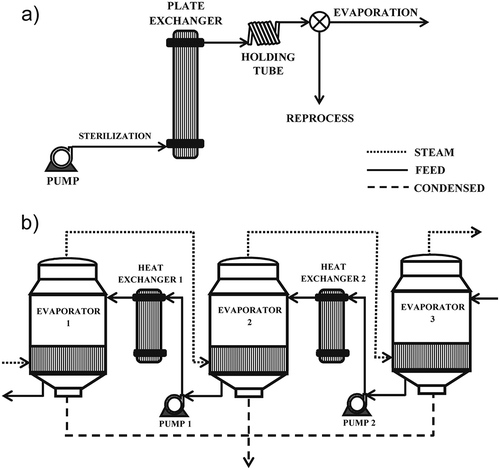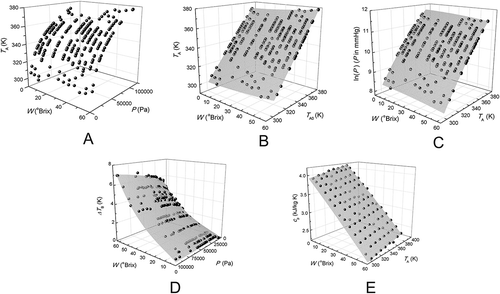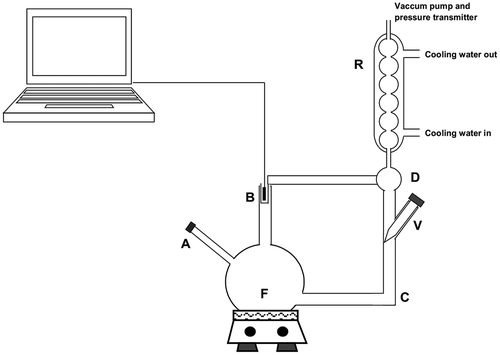Figures & data
Figure 1. Schematic representation of the meat broth concentration process: (a) sterilization step; (b) three-effect evaporation system.

Figure 3. A: Experimental values for boiling point temperature of meat extract (TA) as a function of pressure (P) and soluble solids concentration (W); B: dependence of TA on the boiling point of pure water at the same pressure (TA0) and W; C: dependence of meat extract vapor pressure (ln P) on TA and on W using Eq. (2); D: dependence of the boiling point elevation (∆TB) of meat extract P and on W using Eq. (3); E: dependence of the specific heat (cP) of meat extract on temperature (T) and on W using the best model fitted (Eq. 5).

Table 2. Fitting parameters for the model correlating the boiling point elevation (∆TB) as a function of pressure and soluble solid concentration (Eq. 3).
Table 3. Fitting parameters for the proposed models correlating the specific heat (cp) as a function of temperature and soluble solid concentration.

